Think the only treasures in Delaware are our beaches and quiet towns? Think again. Our state’s history is packed with stories of lost fortunes, from pirate loot buried in sandy dunes to shipwrecks spilling coins along the coast.
These tales might be more than just old legends—some of that treasure might still be out there, waiting for someone to dig it up.
Picture combing the shoreline at Coin Beach, where storms still uncover 18th-century coins from the Faithful Steward shipwreck.
And you don’t have to be a pro to join the hunt. Grab a metal detector, check local rules, and start exploring. Delaware’s parks and beaches welcome treasure seekers year-round.
So next time you’re out hiking or strolling the shore, keep your eyes open. Our state’s past is full of surprises, and the next big discovery might have your name on it.
The Hidden Treasures of Delaware Waiting to Be Discovered
Here are some of the most intriguing and valuable treasures that remain undiscovered within the state:
HMS De Braak’s Sunken Treasure – $1,200,000+
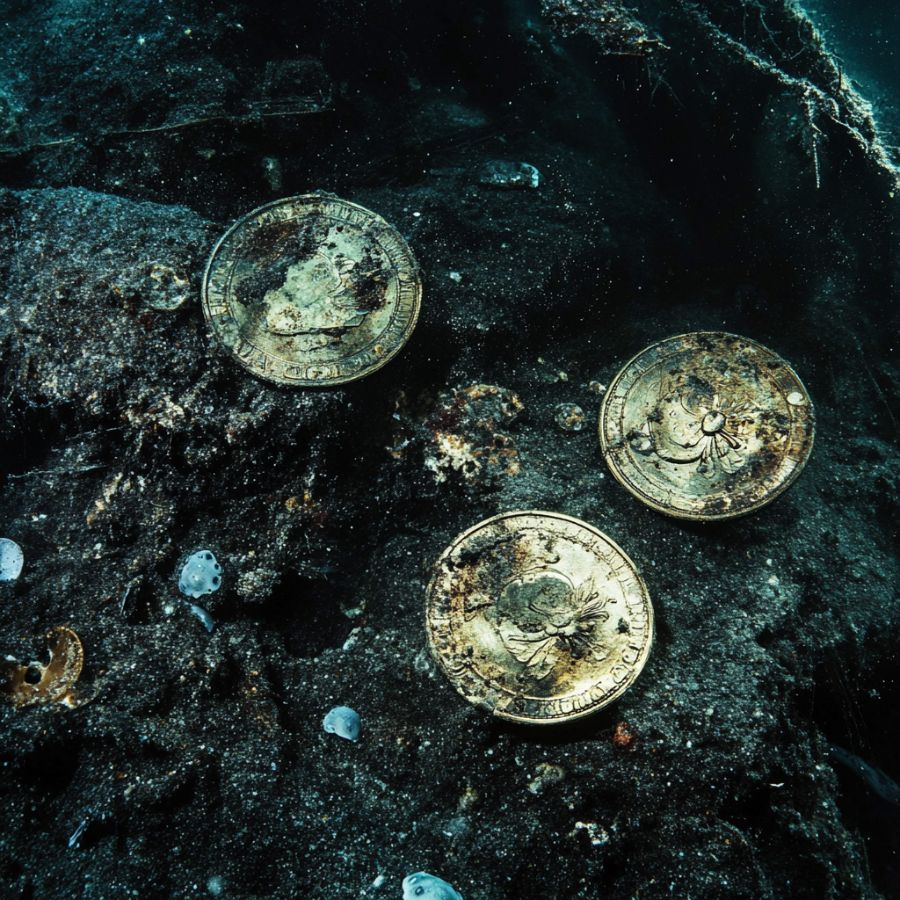
The HMS De Braak was a British warship patrolling the Atlantic in the late 1700s. Its crew captured Spanish ships during conflicts, and stories spread about gold and silver stored in its hull.
In May 1798, a fierce storm off Delaware’s Cape Henlopen overturned the ship. Most sailors drowned, and the wreck sank quickly.
Divers explored the site in the 1980s and found plates, tools, and crew belongings. No treasure appeared, but records show the ship seized a Spanish vessel carrying precious metals.
Heavy currents and sand covering the wreck make searches difficult. Experts think the gold might still lie buried deep below the ocean floor.
How much the treasure would be worth today
The missing Spanish cargo could be worth $1.2 billion today due to the high value of historical gold and silver.
John Dickinson’s Secret Papers and Valuables – $4,000,000+
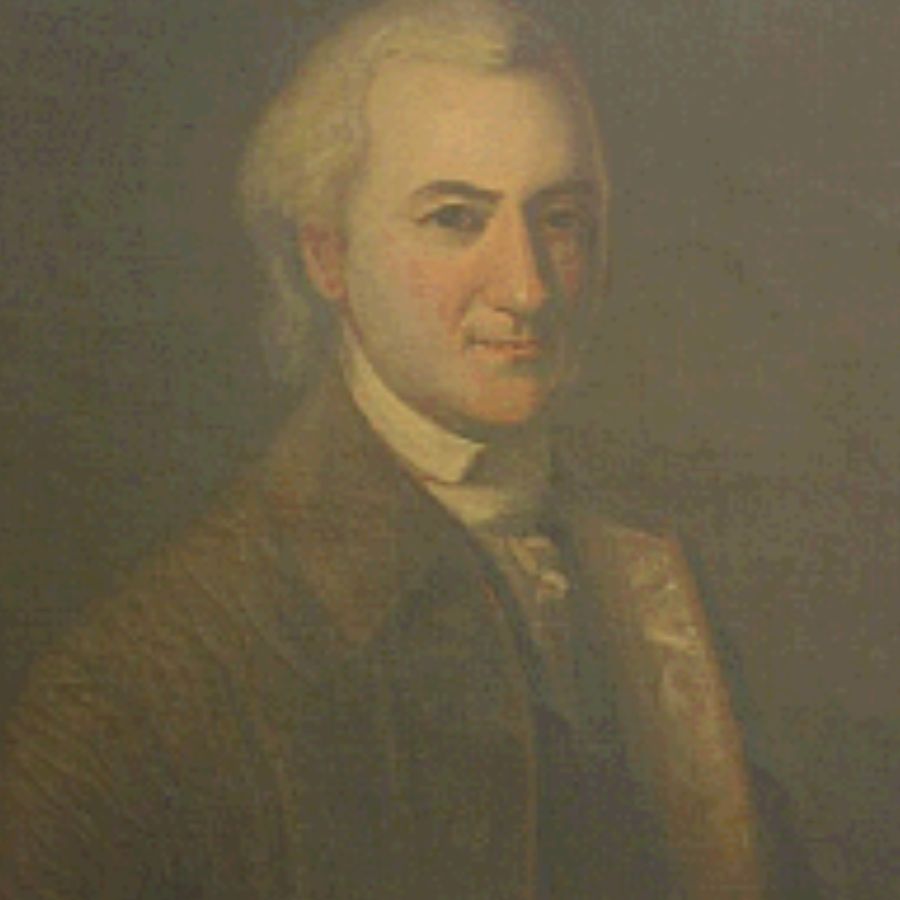
John Dickinson, known as the “Penman of the Revolution,” owned a sprawling plantation near Dover, Delaware, called Poplar Hall.
During the American Revolution, British troops raided his estate in 1781, targeting his politically influential family. To protect sensitive documents, Dickinson reportedly hid them in concealed compartments or buried chests across the property.
The main house, built in 1739, featured hidden cellars and false walls designed to safeguard valuables. While some items were recovered after the war, gaps in Dickinson’s personal correspondence suggest undiscovered caches.
Treasure hunters speculate that gold coins, Quaker-made silverware, or even drafts of the Articles of Confederation might still lie beneath the estate’s overgrown gardens or within its Georgian-era architecture.
How much the treasure would be worth today
The hidden items could be valued at $4 million today, combining historical manuscripts, rare coins, and colonial-era artifacts.
Roosevelt Inlet Shipwreck – $10,000,000+
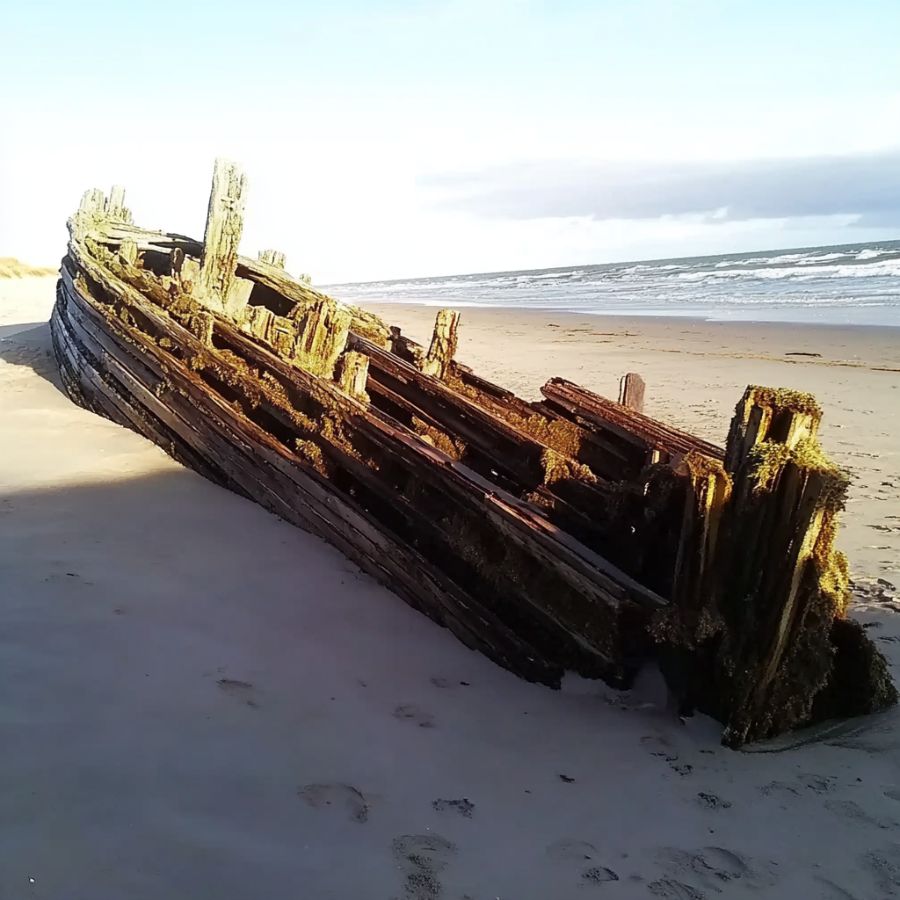
In 2004, workers digging sand near Lewes, Delaware, found wooden planks and pottery shards. Archaeologists identified the remains of a British merchant ship from the 1770s.
The ship likely sank while delivering goods and tools to American colonists. Over 40,000 items were recovered, including rare German plates and wine bottles.
Many crates sank into the mud, shielding them from erosion. Researchers think untouched boxes of trade goods might remain hidden under layers of sand and silt.
How much the treasure would be worth today
Undiscovered artifacts could fetch $10 million today.
Pirate Blackbeard’s Hidden Loot – $150,000,000+
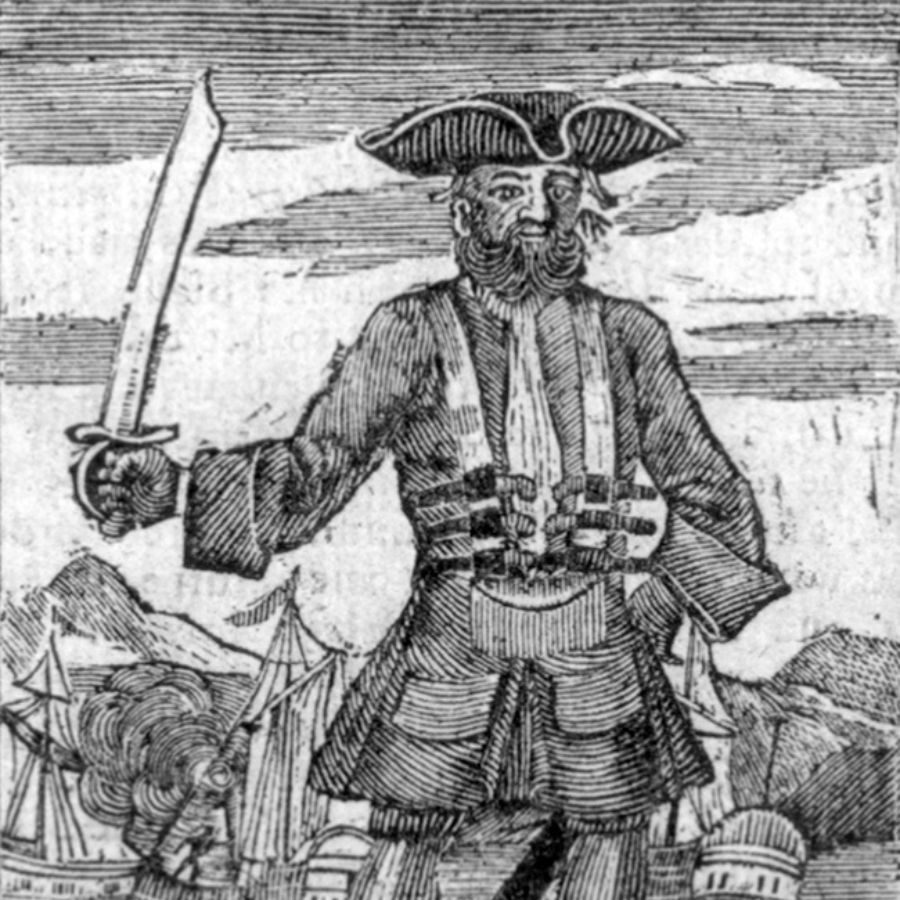
Edward Teach, called Blackbeard, raided ships along the East Coast in the early 1700s. He often attacked Spanish treasure ships carrying silver and gems.
After his death in 1718, sailors claimed he hid chests near Delaware’s coast to protect his wealth.
Blackbeard’s ties to Delaware come from old sailor journals. Some accounts mention a hidden cove near Rehoboth Beach. Storms and shifting shorelines could have buried the loot deeper over time.
How much the treasure would be worth today
Blackbeard’s stolen goods might total $150 million, including rare coins and jewelry.
The Lost Confederate Payroll – $2,000,000+
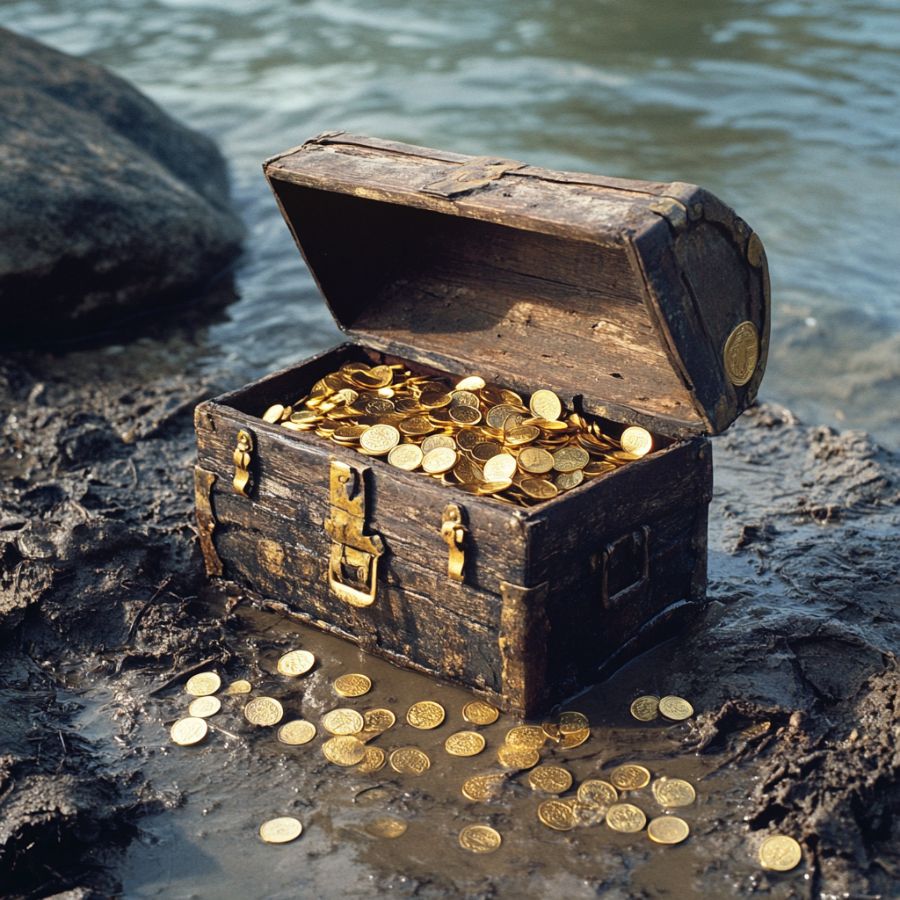
During the Civil War, Confederate troops moved gold coins through Delaware to pay soldiers. In 1863, Union soldiers ambushed a wagon near Seaford. The drivers buried the gold to keep it safe but died before revealing the spot.
Letters from soldiers confirm the gold existed. Modern searches use old maps showing forests and streams that no longer match the landscape. The coins could be anywhere under modern roads or farms.
How much the treasure would be worth today
The buried payroll’s value could reach $2 million.
The Fenwick Island Gold Coins – $5,000,000+
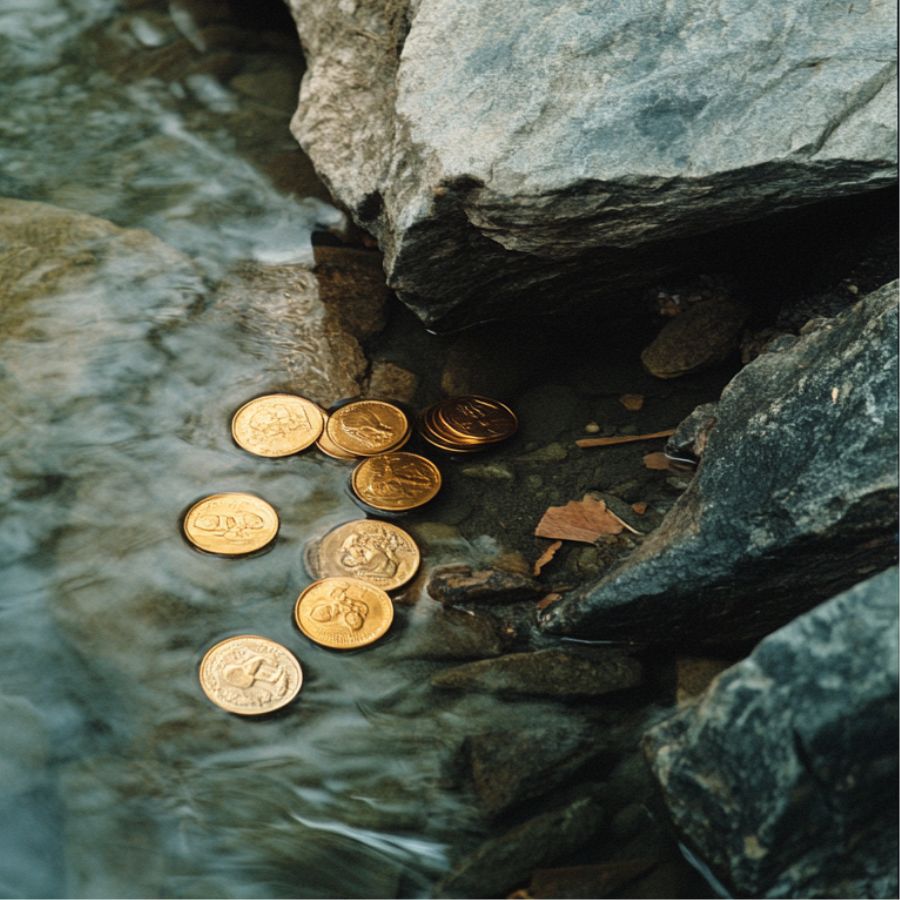
Fenwick Island’s coastline has long been a hotspot for storms that reshape its sandy shores. In the early 1900s, one such storm ripped through the beach, exposing a cluster of gold coins. These coins, stamped with dates from the 1600s and 1700s, matched currencies used by Spanish and British ships.
Cedar Island, a small landmass in Little Assawoman Bay, served as a pirate hideout. Its marshy terrain provided cover for burying stolen goods.
While some coins were collected in the 1900s, others remain hidden. Treasure hunters focus on areas where old maps show Cedar Island’s original boundaries.
How much the treasure would be worth today
The missing coins could total $5 million today due to their age and gold content.
The Smyrna Gold Cache – $10,000,000+
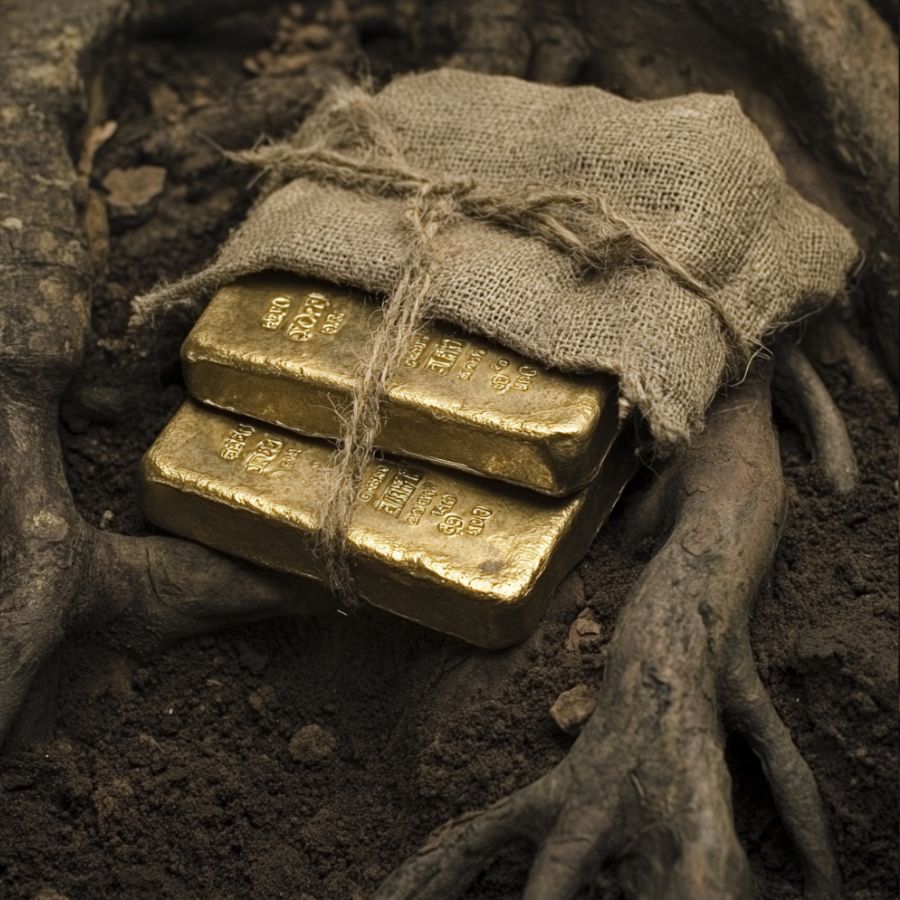
Elias Hazzard, a wealthy farmer in 1850s Smyrna, buried gold bars to protect his savings from thieves. Hazzard owned hundreds of acres near Duck Creek, where he hid the gold.
His sudden death from illness left the location a mystery. Relatives found a map with clues like “the old oak” and “three stones north of the creek.”
Duck Creek’s path changed after floods in the 1870s, erasing landmarks. Hunters dug up rusted tools and farm equipment but no gold. The site is now a residential area, complicating searches.
How much the treasure would be worth today
Hazzard’s gold could be valued at $10 million adjusted for modern prices.
The Indian River Inlet Treasure – $15,000,000+
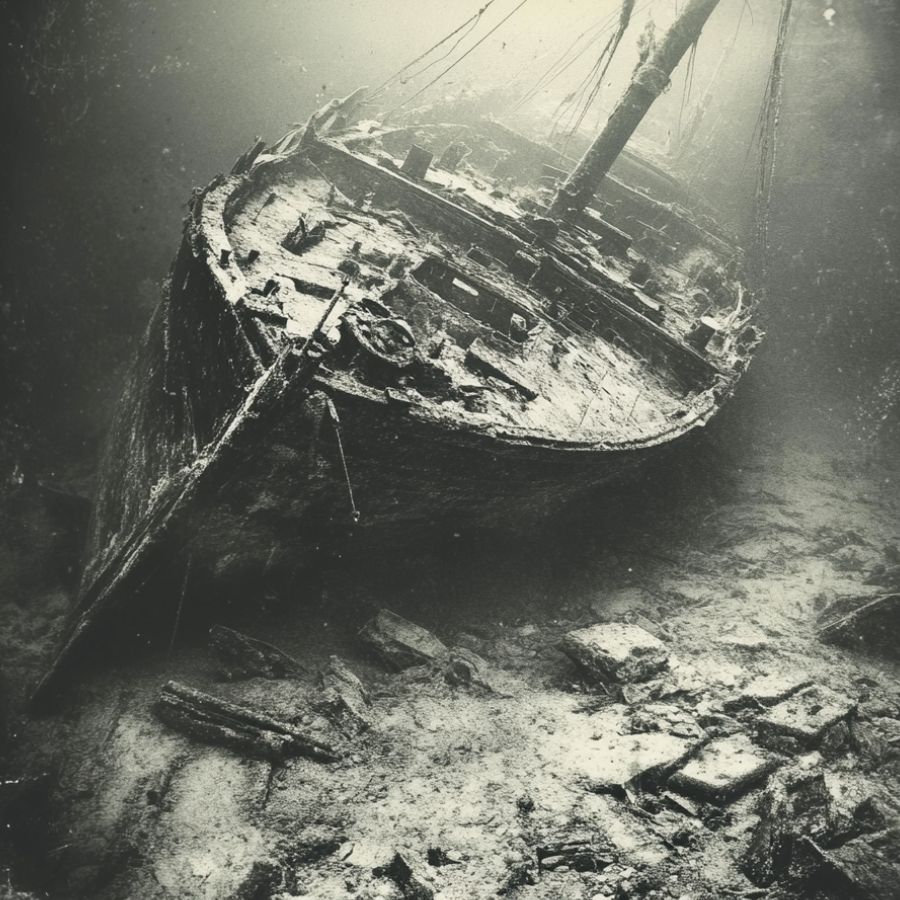
The Faithful Steward, a British ship carrying 400 barrels of coins, sank near the Indian River Inlet in 1785. Storms broke the ship apart, scattering coins across the seafloor.
Gold guineas and copper half-pennies washed ashore for decades, earning the nickname “Coin Beach.”
Divers found ship timbers and buttons in the 1970s, but most coins remain buried. Recent storms uncovered a 1784 guinea, sparking renewed interest.
How much the treasure would be worth today
The remaining coins and artifacts could total $15 million today.
Caesar Rodney’s Revolutionary Funds – $1,000,000+
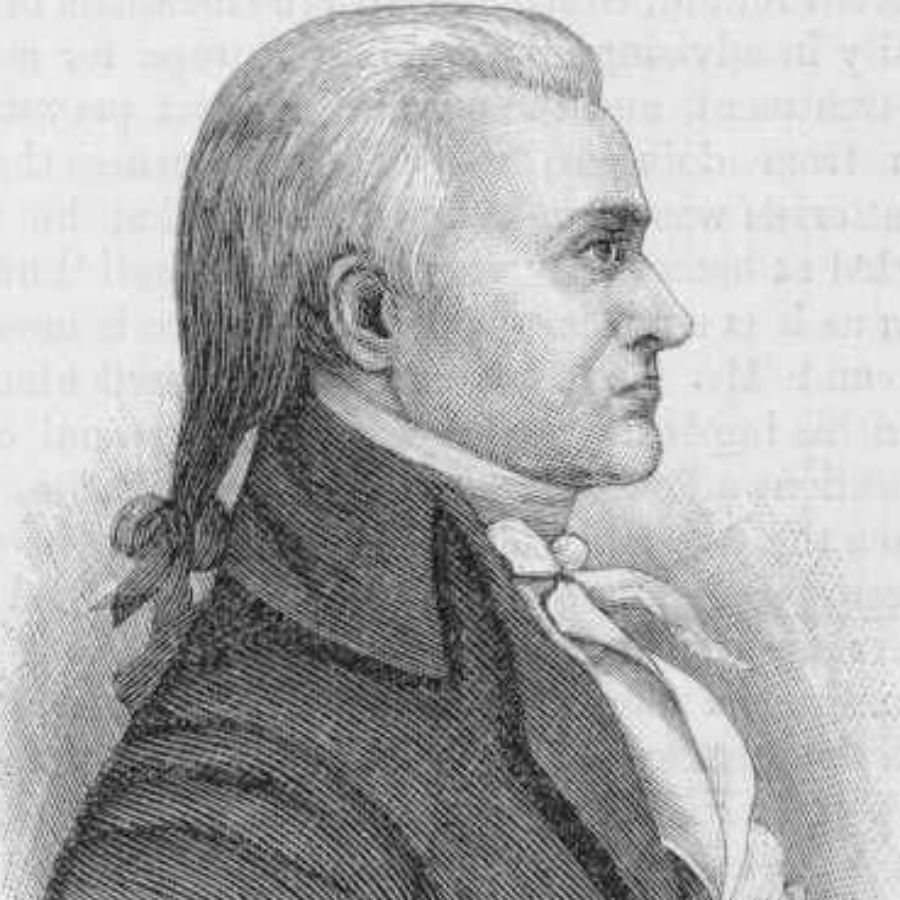
Caesar Rodney, a key figure in Delaware’s fight for independence, managed his family’s 800-acre plantation, Byfield, near Dover during the American Revolution. As president of Delaware and a militia leader, he faced constant threats from Loyalist raids.
Historical records suggest Rodney may have hidden a chest of gold coins to fund militia operations or protect his wealth from British-aligned forces.
His estate, Byfield, included hidden cellars and wooded areas along Duck Creek, ideal for burying valuables. The exact spot remains uncertain, as maps from the era show shifting landmarks due to floods and farming.
Rodney’s sudden death in 1784 left no written clues. His will freed some enslaved individuals but omitted details about hidden funds.
How much the treasure would be worth today
The chest’s gold could be valued between $500,000 and $1 million today.
The Delaware Bay Pirate Hoard – $8,000,000+
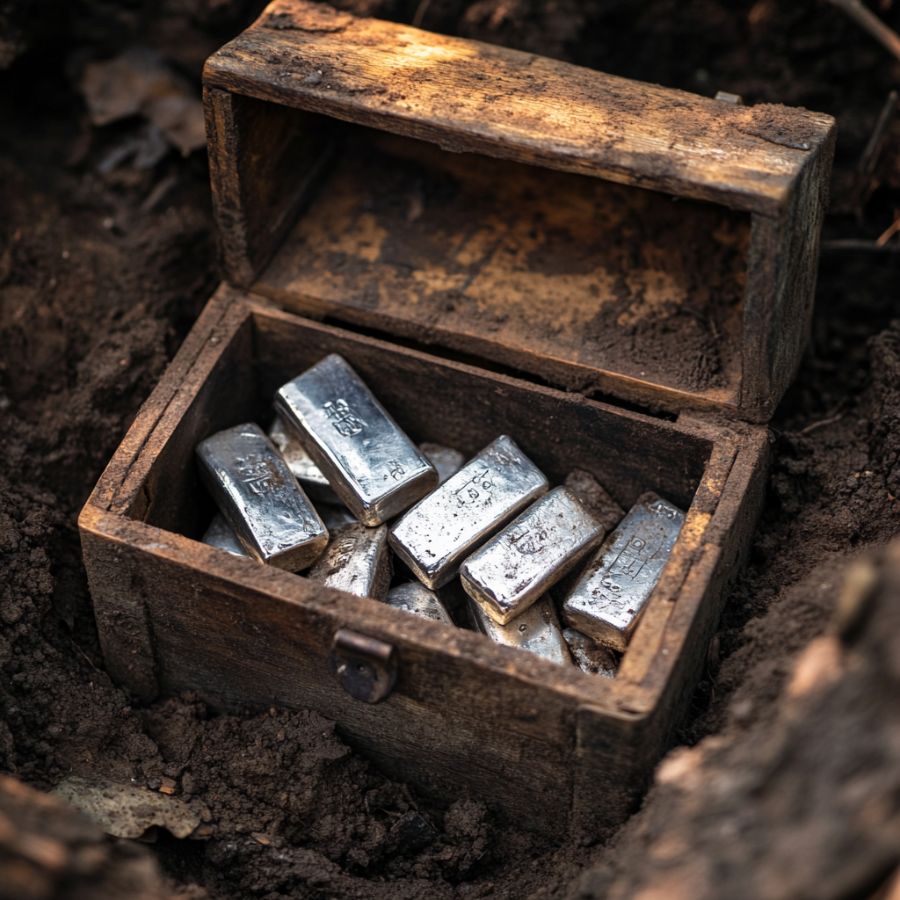
Pirates used Delaware Bay’s twisting channels to ambush ships in the 1600s. A crew called the Moon Spinners tricked ships with fake signal fires, then looted cargo. Captured sailors reported stolen silver bars and silk buried on islands.
One captain’s log points to a hoard near Kitts Hummock, linked to William Kidd’s crew. Tides eroded the island, possibly submerging the treasure.
Hunters search marshlands where pirate camps once stood. Saltwater and mud may have damaged the chests, but valuables like silver could survive.
How much the treasure would be worth today
The hoard might reach $8 million with silver bars and rare fabrics.
The Augustine Beach Silver – $25,000,000+
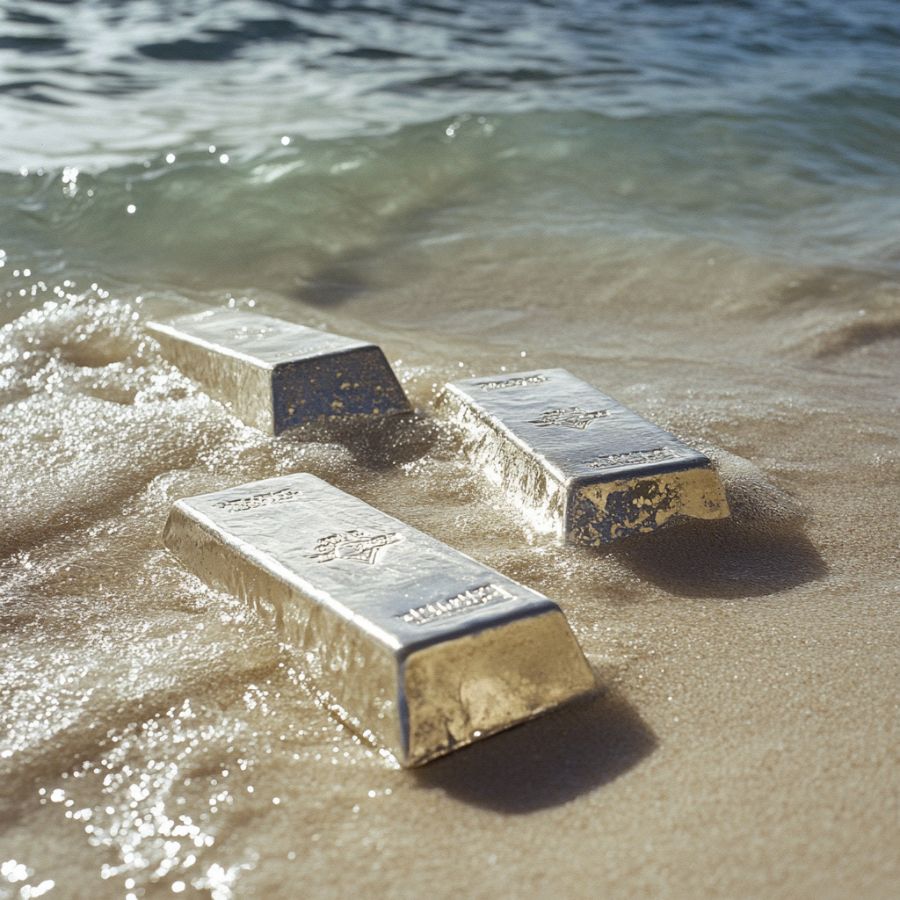
In the early 1700s, Spanish ships sailed from South America to Europe, loaded with silver mined in Peru. One ship, part of a fleet transporting taxes to the Spanish crown, veered off course near Delaware Bay.
A storm with fierce winds drove it onto sandbanks near Augustine Beach. The hull cracked, spilling silver bars into the bay’s murky waters.
Crews sent from Havana salvaged some silver using diving bells, but thick mud swallowed most of the cargo. The ship’s name remains unknown, but records show it carried 300 silver bars stamped with Spanish royal seals.
Divers in 1960 found a silver bar wedged in clay, confirming the site. The bars, each weighing 70 pounds, were meant to fund Spain’s European wars. Their unique markings would verify their origin.
How much the treasure would be worth today
The remaining silver could total $25 million based on weight and historical value.
Captain Kidd’s Buried Treasure – $500,000,000+
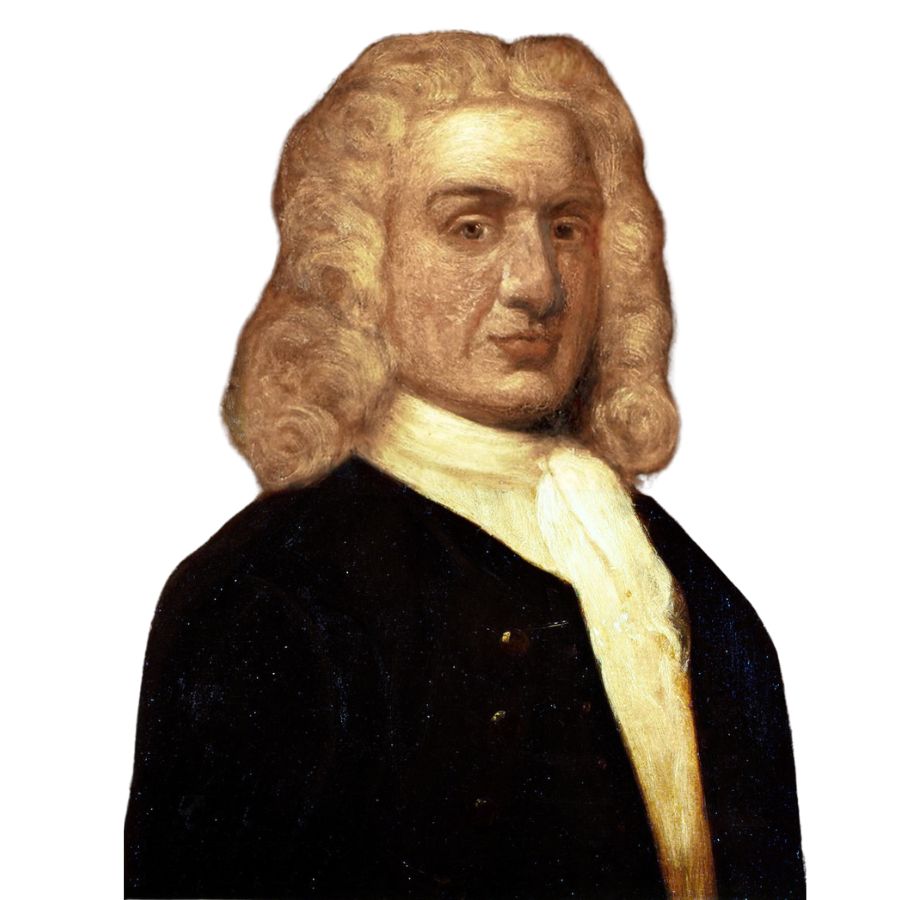
William Kidd was a pirate hired by England to hunt other pirates. He turned rogue, seizing treasures like silk and gold in the 1690s. Before his trial in 1701, Kidd hid chests of loot, including one found on Long Island.
Kidd’s crew mentioned stops along the Delaware River. Divers search for iron chests described in old ship logs. These could hold jewels from India or silver meant for trading in the colonies.
How much the treasure would be worth today
Kidd’s Delaware treasure might be worth $500 million in today’s market.
The Murderkill River Treasure – $8,000,000+
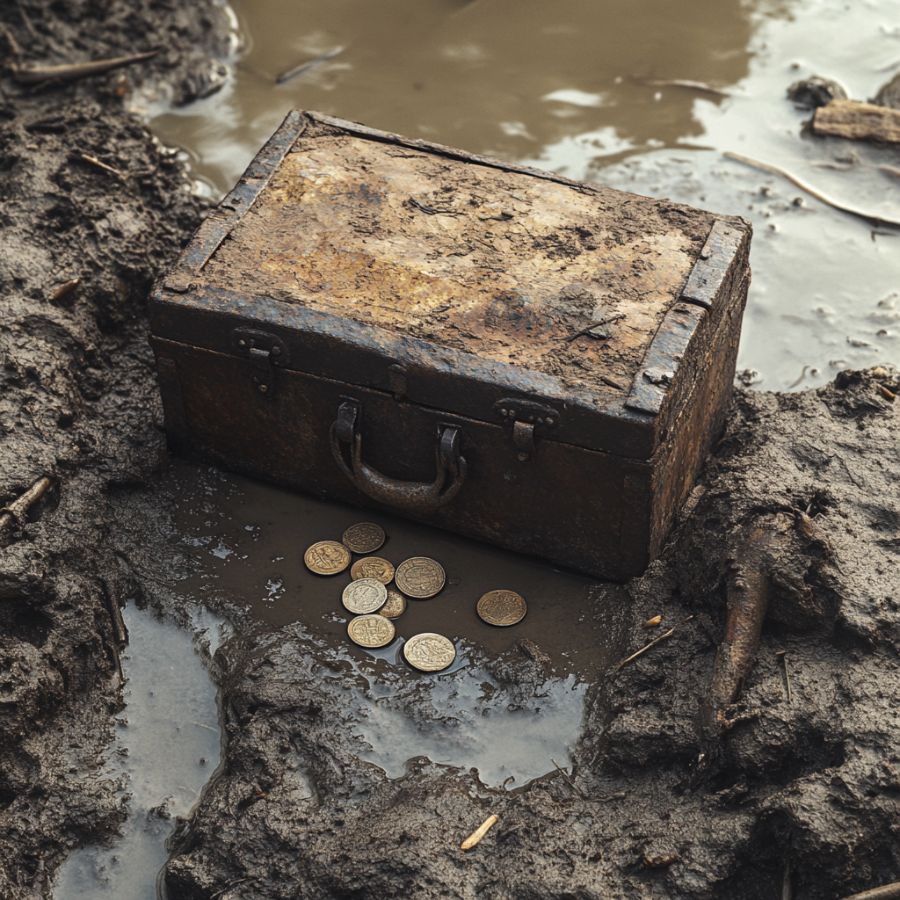
Dutch settlers arrived in Delaware in 1631, building forts near the Murderkill River. Conflict with the Siconese tribe forced families to bury valuables in 1632. They hid iron chests containing gold guilders, silver spoons, and brass candlesticks along the river’s east bank.
A map drawn by settler Pieter Evertsen marks burial spots near Killen Pond. The river’s name comes from the Dutch moeder kille (“mother river”), referencing its importance.
Scans in 2005 detected metal clusters 15 feet below the surface, but landowners block digs.
Floods may have moved chests closer to the river’s mouth. The Dutch East India Company tracked missing items, adding proof to the claims.
How much the treasure would be worth today
The buried items might reach $8 million, including antique and precious metals.
The Rehoboth Beach Shipwreck – $12,000,000+
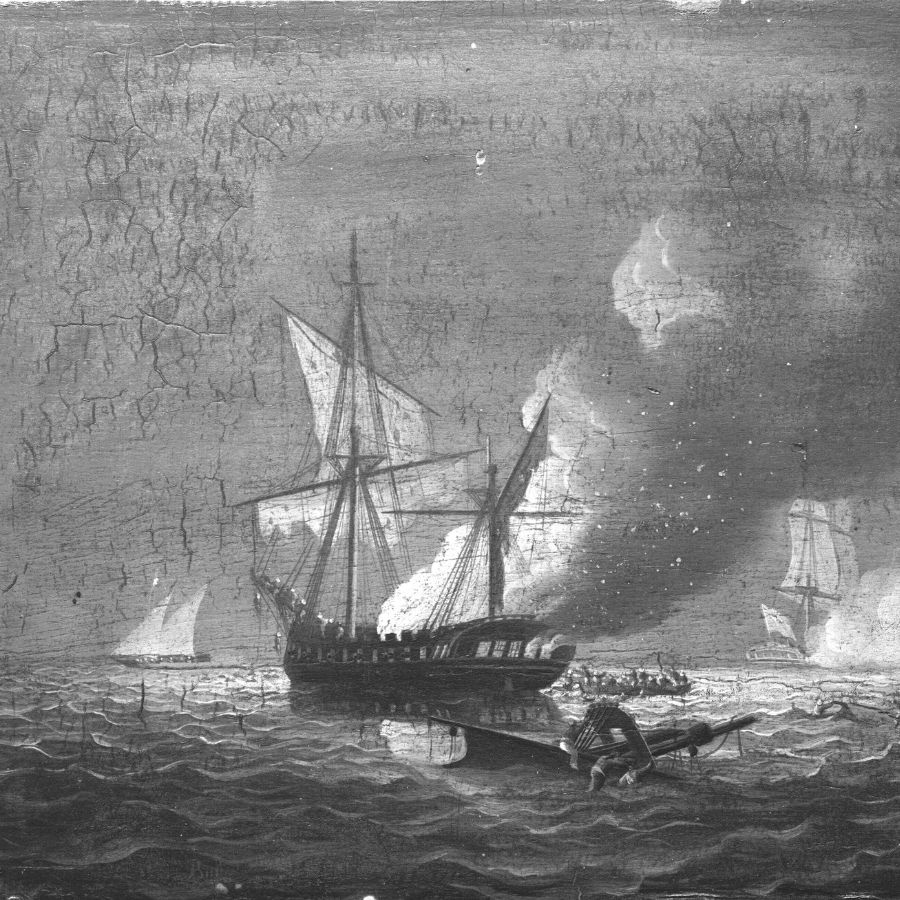
The British cargo ship Seahorse left Liverpool in 1873 with 50 crates of gold coins for Philadelphia banks. A midnight storm in October pushed it onto Rehoboth Beach’s sandbars. Waves smashed the hull, scattering coins into the surf.
Captain Thomas Blair’s log describes losing steering in shallow water. The coins, minted in 1872, bore Queen Victoria’s profile and One Sovereign inscriptions. Beachgoers found 12 coins in 1927, all dated 1872-1873, confirming the link.
Sonar images from 1998 revealed a 100-foot-long wreck buried under 20 feet of sand. Storms in 2010 exposed a ship’s wheel, but tides reburied it. The gold, mostly British sovereigns, was newly minted, making them highly collectible.
How much the treasure would be worth today
The Rehoboth Beach Shipwreck’s gold could be worth $12 million today.
The Cape Henlopen Spanish Galleon – $150,000,000+
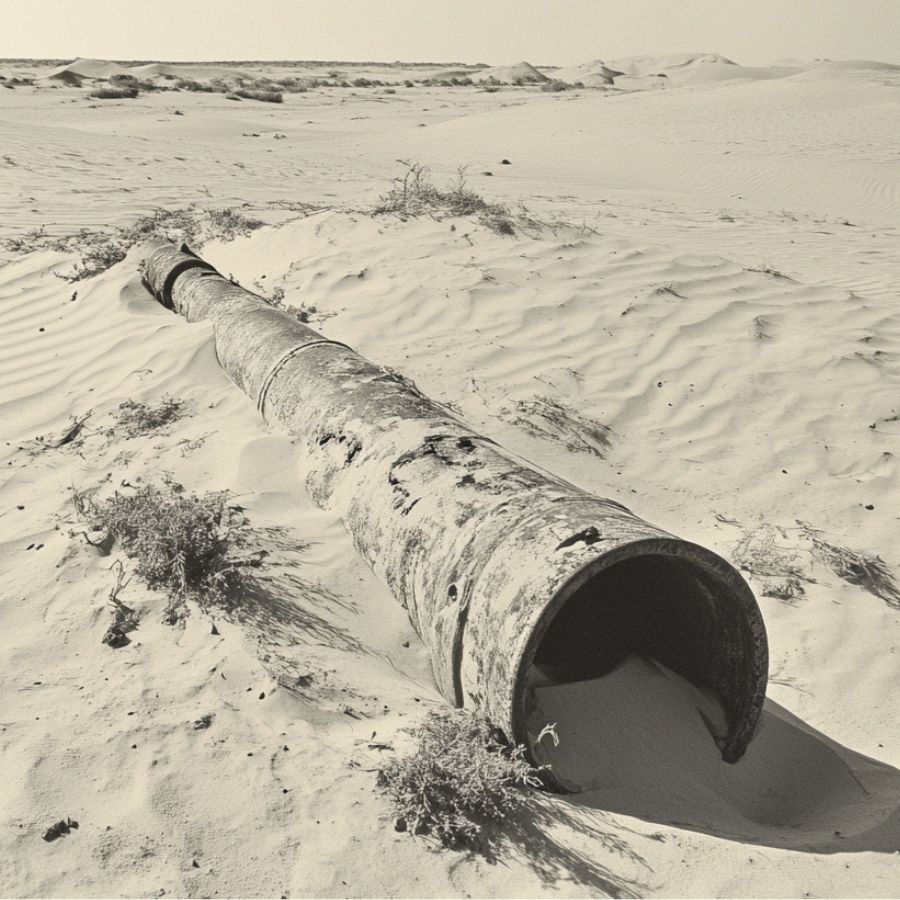
A Spanish galleon named La Fortuna left Peru in 1695 with Inca gold and church artifacts. British privateers attacked near Cape Henlopen, firing cannons that shattered its mast. The damaged ship drifted into shallow water and sank.
Survivors reported 20 gold statues of Inca gods and jeweled crosses in the hold. A 1701 letter from a sailor mentions “gold glowing under the waves” near the cape. Hunters in 1952 found a cannon with Spanish markings, but sand hid the rest.
Divers found only an anchor chain, suggesting the wreck shifted. The gold statues, if intact, would be priceless relics of Inca culture.
How much the treasure would be worth today
The cargo could exceed $150 million with Inca gold and artifacts.
The Appoquinimink Creek Gold – $6,000,000+
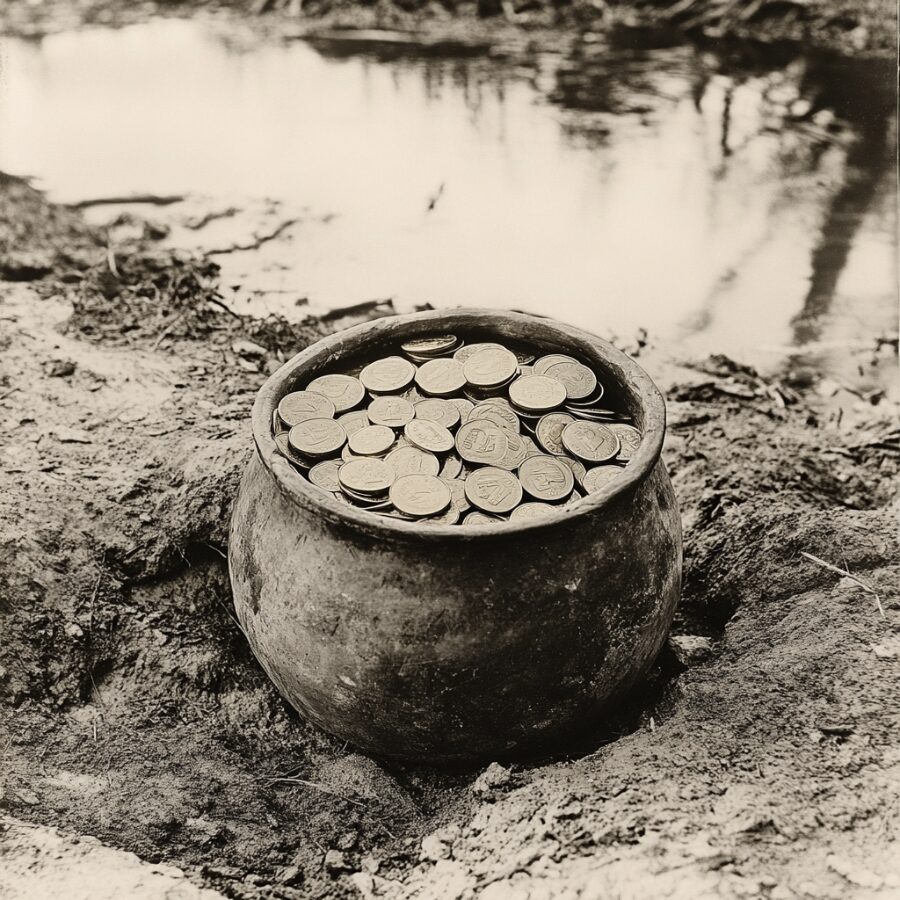
Quaker families near Appoquinimink Creek buried savings in 1776 to avoid British confiscation. They used iron pots to store English guineas and Spanish doubloons. A diary entry by farmer Samuel Hargrave mentions hiding pots “by the split rock,” a landmark lost to erosion.
A 1934 storm exposed a rusted pot containing 80 coins, mostly from the 1760s. The site, now private land, restricts digging. Ground scans in 2018 found metal deposits 10 feet deep near the creek’s north bend.
The coins include rare 1774 Virginia halfpennies and British guineas. Floods may have washed some pots into the creek bed. Hargrave’s descendants hold letters hinting at other sites, but details are vague.
How much the treasure would be worth today
The buried gold could total $6 million, including rare colonial coins.
Henry Hudson’s Forgotten Cargo – $1,500,000+

In 1609, explorer Henry Hudson sailed the Halve Maen into Delaware Bay while searching for a trade route to Asia. After clashing with local tribes, his crew hastily abandoned parts of their cargo, including iron tools, Dutch trade beads, and navigational instruments, to lighten the ship during storms or escapes.
Hudson’s logs mention losing a longboat near Cape Henlopen, possibly filled with supplies. Modern divers have found 17th-century Dutch pottery shards in the area, hinting at larger undiscovered items.
Legends suggest a brass astrolabe or sealed crates of fur pelts, meant for trade with Indigenous groups, may rest in the bay’s silt-heavy depths.
How much the treasure would be worth today
The lost cargo might total $1.5 million, driven by rare navigational tools and early colonial trade goods.


